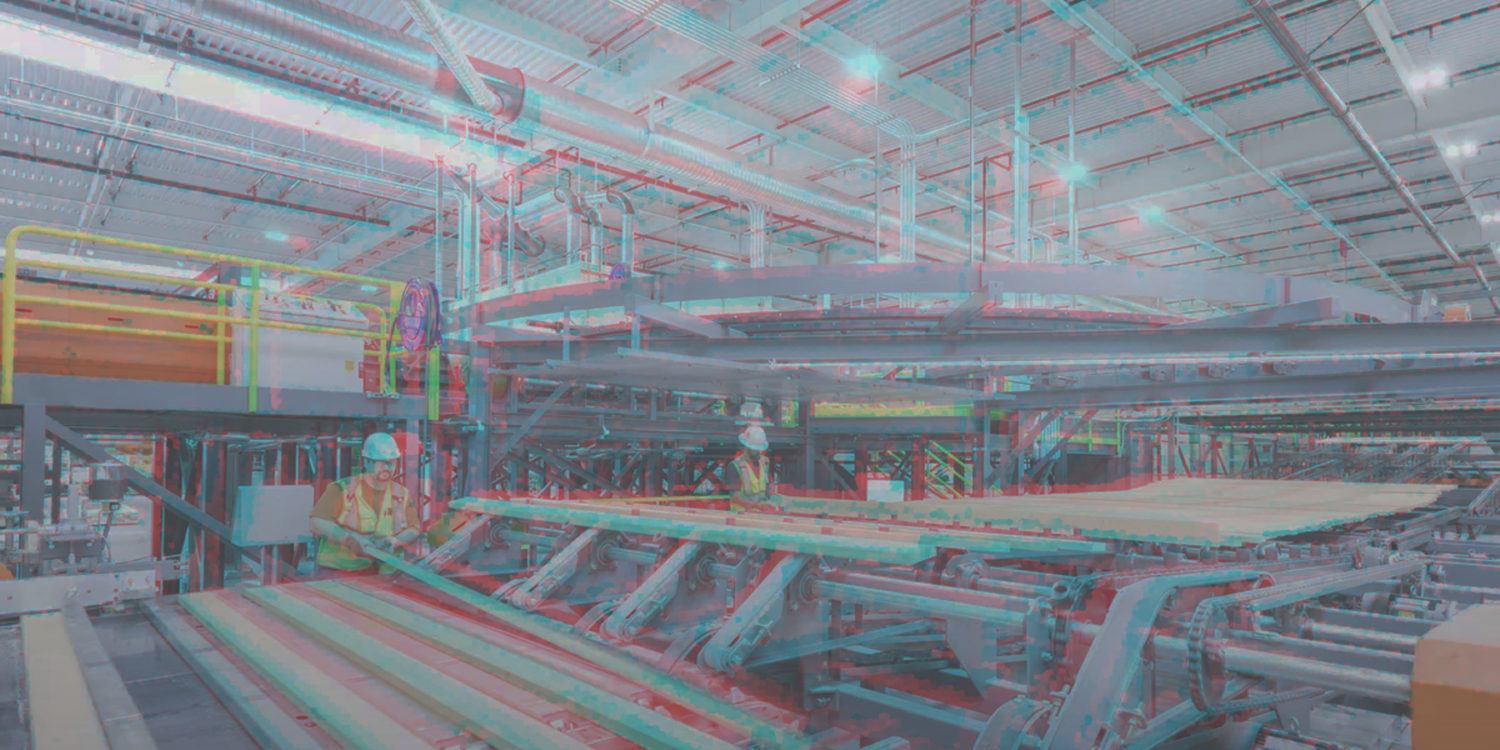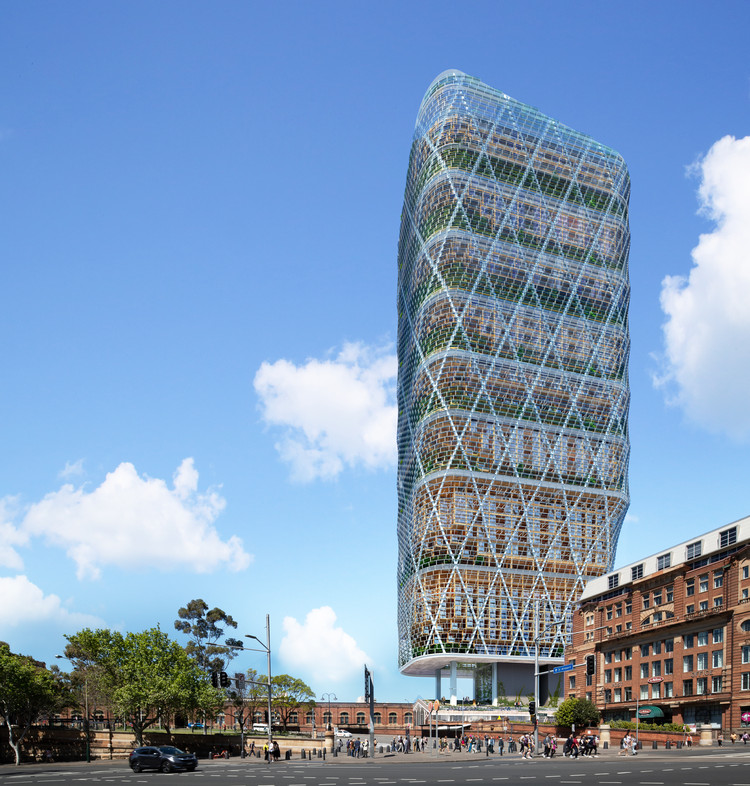Last May, the developer of one of the most expensive, contentious and highly-anticipated architectural proposals in years announced its sudden cancellation. Quayside, also known as Sidewalk Toronto, was a techno-utopian city planning initiative developed by Google’s urban innovation startup Sidewalk Labs. They planned to redevelop the Toronto waterfront with sleek skyscrapers and autonomous vehicles, but quickly and consistently drew the ire of those who rightfully viewed it as an encroachment of highly funded private interests into the public domain, accelerating gentrification and digital surveillance under the guise of technologically advanced sustainable urban development. In exchange for the rights to privately develop and reap untold quantities of user data from this new city district, Quayside promised enormous sustainable benefits and cast the project as an eco-friendly and morally righteous endeavor, instead of a private sector power grab. The major green selling point, featured prominently in all marketing material and renders, was Sidewalk Lab’s bold intention to build every new Quayside building out of wood using mass timber technology. More specifically, the project would use thousands of cross-laminated timber (CLT) panels, made by gluing together a series of small wood pieces in alternating directions to form large spans with serious structural capacity.
In both architectural publications and leading mainstream outlets, optimistic articles have similarly concluded that building with wood might just be the best new way for designers and developers to earn serious green cred. Invented in Austria and Germany during the 1990s, mass timber has rapidly risen to prominence through its reputation as a naturally regenerating, globally abundant and incredibly versatile alternative to carbon-intensive steel and concrete construction. Despite its sudden cancellation, the massive $1.3 billion Quayside project choosing to flaunt its mass timber investment so prominently is a telling sign indicating the upward trend in wood construction.
Once a strictly European endeavor, mass timber has arrived with a bang in North America. Advocates argue that mass timber emits less carbon than steel and concrete during the construction process, and stores sequestered carbon that would otherwise be released back into the atmosphere if the trees decayed naturally in the forest. In other words, by removing mature trees from the forest and planting new seedlings, the carbon-absorbing process of the forest growing cycle could be harnessed to reduce overall emissions. If the embodied carbon of the building materials is deducted from the emissions produced during the manufacture and construction process, the claim often repeated is that mass timber buildings can be zero-emission, or carbon neutral. With this premise, building with wood appears to be a simple, singular solution to the enormous problem of architecture’s enormous carbon footprint.
Canadian architect Michael Green, perhaps the most prominent mass timber designer working today (as well as one of the head architectural partners on the Quayside project), claims that wood building technology is crucial for addressing the oncoming crises of climate change and affordable housing. Green argues that as urban centers continue to densify, three billion people will need new homes by 2040. If we could build those new homes from carbon-sequestering wood instead of concrete and steel, huge amounts of carbon will be prevented from polluting the atmosphere. Green proposes that in order to meet the demand of this rapid and inevitable urbanization we must focus on quickly developing 30-storey tall wood buildings with standardized joinery and assembly techniques, a project his design studio MGA has been hard at work on.
The seductive simplicity of simply switching from concrete to wood is hard to resist, but it starts to lose its luster as larger scales of interaction come into focus. While most industry advocates admit that the carbon saving potential for mass timber is predicated on rigorous sustainable forestry management practices, most fail to emphasize the gargantuan effort enacting such practices would take. This convenient omission is crucial, reminiscent of other sustainability-oriented design innovations championed for their revolutionary and disruptive potential, yet challenge very little about the system they propose to revolutionize. Green and other equally enthusiastic wooden skyscraper advocates ignore that if mass timber technology exists simply to offer powerful real estate interests and tech giants an easy alternative to concrete and steel in their well-funded projects, it will almost certainly increase carbon emissions through rapid deforestation as demand for wood products goes up. Unless the rise of mass timber is accompanied with a strong demand for forest protections and bans on harmful practices, it cannot be claimed as a proper solution to ecological degradation. Through its passive attachment to the industrialized market of lumber harvesting and construction, CLT will devolve into technocratic material solutionism.
The impulse towards quick fixes is not a new phenomenon in sustainable design. Over the past 30 years, the architecture community has made considerable efforts attempting to reformulate itself with a more sustainable emphasis, while remaining inextricably linked to the most carbon-intensive industries on the planet. LEED (Leadership in Energy and Environmental Design), the foremost sustainable building authority in the US, operates largely to promote the burgeoning market for green building products and offer tax breaks to marginally (if at all) less wasteful developments. Instead of challenging the climatically disastrous construction practices of mainstream architecture, LEED puts emphasis on which green products are selected, how much recycled concrete is used, the number of bike racks provided and proper allocation for electric vehicles. This serves to give designers the impression that they individually possess the agency to push architecture in a more green direction, using convenient market mechanisms to shift towards greener products and practices. LEED and its parent organization, The Green Building Council, were recently described as having, “helped thousands of developers win tax breaks and grants, charge higher rents, exceed local building restrictions and get expedited permitting by certifying them as “green” under a system that often rewards minor, low-cost steps that have little or no proven environmental benefit.”
What started as an attempt to rectify ecologically detrimental building practices evolved into an elaborate way to enable its most wasteful elements. LEED’s general failure to reduce carbon emissions has been well documented and is common knowledge within the design community, but for the most part, this realization is met with a sigh of indifference. It seems as though the lion’s share of momentum within sustainable architecture focuses on promoting marginally less wasteful building materials and practices, giving the construction industry green cover to continue on with business as usual. Mass timber risks becoming another LEED-style solution, marginally improving the carbon emissions of the building industry while simultaneously enabling and exacerbating to its core anti-sustainable tenets. With wood, the stakes are incredibly high, considering the potential for ecological decimation via increased harvesting and deforestation.
While it’s no surprise that green design advocates have jumped on the mass timber bandwagon given its potentially paradigm-shifting potential to cut carbon emissions, recent developments in the world of wood building show how rapidly CLT is being subsumed by the same industrial interests responsible for exacerbating climate change. Technology and construction company Katerra has arguably been the most aggressive player in the newly emerging North American mass timber scene, completing construction in 2019 on a new 270,000 square foot CLT facility in the timber rich region of eastern Washington with plans to build three more. The company recently purchased Michael Green’s firm, MGA, promising to supercharge the mass timber movement in North America with a series of large wood developments. Around the same time of the MGA purchase the company installed its new CEO Paal Kibsgaard, former chairman and CEO of the world’s largest oilfield service company Schlumberger. Katerra hopes to make CLT competitive with other globally scaled products like concrete and steel, manufacturing mass timber building components at an industrial level.
This increased demand for timber products could lead to an equitable, well considered and long term plan to rejuvenate our beautiful forests, but the current market pressure putting profit above all else would be a considerable obstacle. As it stands, demand for new wood products would be generated by existing real estate interests who continue to densify cities with profit-seeking developments. It’s easy to imagine CLT becoming the next luxury building trend to invade the skylines of rapidly gentrifying cities, giving an eco-friendly excuse for remaking the city in service of maximized profit. It’s already happened in cities like Portland where the timber industry has a long history of operation. A recent piece in The New York Times describes how developers are quickly realizing the value in going green with mass timber, making record profits off multi-million dollar office buildings and apartment complexes in urban centers.

Tongass National Forest
(Creative Commons photo by Rob Bertholf)
Whether or not mass timber can help curb carbon emissions depends on how forests intended to produce raw materials will be managed: will the emphasis be on absorbing as much carbon as possible, or providing sufficiently cheap materials for profit-hungry developers? A massive spike in demand without the proper forestry management regulations in place could decimate forests that have been on the decline for years. This doesn’t mean that more wood buildings are necessarily a bad thing, but designers looking to act ecologically should keep in mind the larger repercussions of rising trends. Last winter the Trump administration announced its intention to lift restrictions on the Tongass National Forest, the largest intact temperate rainforest on the planet, clearing the path for intensive harvesting and clear-cutting. There is sufficient reason to worry that the good intentions of ecologically-minded designers and developers could result in further ecological decimation if more emphasis is not first put on properly rethinking our interaction with the environment.
These days, increasingly disruptive climate events have revealed the catastrophic impact of the massive industrial operations that sustain our modern lifestyles. The network of industries and government bodies responsible for inciting and exacerbating most of the catastrophic increases in carbon pollution have reacted to this pressure in a predictably obfuscatory manner. Large NGOs and government commissions have combined to promote an almost singular focus on technocratic concerns like carbon emissions at the expense of any other metric, collaborating with rather than seriously regulating or forbidding the industrial processes that pollute the environment. When we observe “green” shifts in industries like architecture and construction, it pays to be wary of corporate greenwashers eager to cash in on the sustainable trend of the day. Professor of Geography at the University of Manchester Erik Swyngedouw has described this new regime of ‘ecologically modernizing capitalists’ interested in appearing sympathetic to concerns about global warming in order to further “mobilize the mechanism that produced the problem to begin with.” The possibility of any significant economic, social or ecological improvements are downplayed, as PR and marketing outweigh any attempt at significant changes to the status quo. Heroic efforts that industry leaders and government officials champion as a way to stave off the worst effects of climate breakdown will materialize as marginal modifications to production that leave current trends of consumption and extraction intact, unaffected by the inconvenience of climate change.
In order for mass timber to truly engage with the regenerative power of forests to help alleviate our current climate predicament, it must be linked to a greater movement towards ecological reformation at all scales. The urge to enable industrialized monocropping of timber must be fought with the establishment of strict forestry regulations and expanded zones of protection, planning for long term mutual interaction instead of short term profit. Instead of leasing huge swathes of North American timberland to multinational companies, cooperatively owned forest trusts and mill operations could be established to give communities the ability to profit from their own ecosystem. Building from regenerative materials like trees instead of intensively extracted substances like concrete and steel is certainly part of a climate strategy, but only if it resists being absorbed into an agenda of profit-driven production with no long term-ecological considerations.


